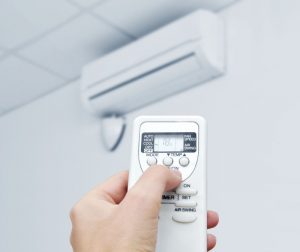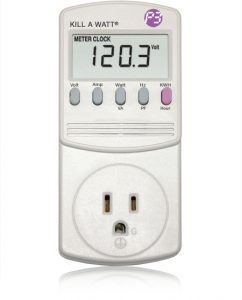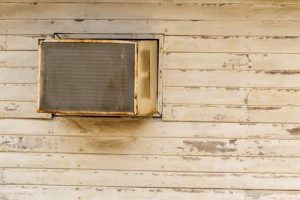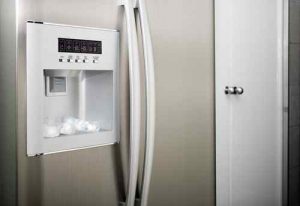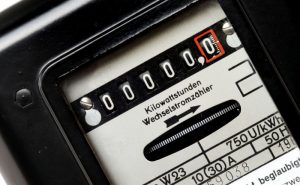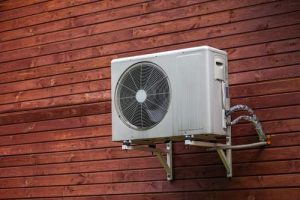Why and How Does Inverter Technology Save Electricity?
I get this question pretty regularly. Not just from commoners (laypeople), but many seasoned engineers and technocrats. A common statement is: “Just by eliminating on/off cycle, you cannot save more than 7-10%. These claims of 40% savings are just marketing hype.”. I got into a serious discussion with someone on this topic recently, which prompted me to write this article. I hope it helps give people a better idea of how inverter technology helps save electricity. I could not find any other research paper/website, etc. giving me this information. So you will not find any references section in this post. But this is prepared just based on my experience and observation of data for past 8-9 years of doing Bijli Bachao and observing the market.
Now, in this post, we will mostly use Air Conditioners as a reference appliance. However, the same thing is valid for refrigerators as well. However, I cannot say the same about washing machines, because of the lack of market data for the same (and some common sense). These are the only three appliances where I have seen inverter technology being used in India.
In case you are wondering what is inverter technology, you can check it over here: What is Inverter AC and How it is Different from Non-Inverter AC?
Let’s look at Air Conditioners.
Many people come and ask me: “What is better in a 5 Star AC that it saves more electricity as compared to 3 Star? Or is 5 Star just marketing hype?”. 5 Star ACs are just more energy-efficient, and there are several ways manufacturers improve the efficiency of Air Conditioners. Some of them are (this list is not limiting):
- It is using a better refrigerant that offers better thermodynamic efficiencies.
- They are increasing/enhancing heat exchanger surface (mostly condenser) areas for better heat dissipation.
- Use better compressors (inverter technology, etc.).
Now the comment that I got from one gentleman was that manufacturers are making 5-star inverter ACs with larger condensers, that is why they save more as compared to 3-star non-inverter ACs. If manufacturers make non-inverter ACs with larger condensers, then they will also save as much. And to a great extent, I do not disagree that non-inverter ACs cannot be improved. But this discussion is all about making a case for inverter technology, and why it makes sense to invest in inverter technology and not so much on non-inverter. So, let’s jump into some data and compare some numbers.
Comparing the numbers
To compare the numbers, I have taken data from a couple of models of Daikin that are kind of similar. Both are BEE 3 star with almost similar ISEER numbers and technology. One is a non-inverter model, and the other is an inverter. The reason I have chosen Daikin is because I think they are pretty good in terms of transparency about numbers. Most Japanese brands provide a good amount of data, but Daikin is the best in terms of information that you can use to make a decision.
So, let’s jump into some calculations:
Our Scenario – Room 1
Current heat in the room – 16000 BTUs (at 40 degrees)
Heat in the room at desired temperature – 8000 BTUs (say roughly at 20-21 degrees)
Heat inflow in the room (through walls/human, etc.) – 4000 BTUs/hr
So, once the 8000 BTUs extra is removed, in the steady-state the AC has to remove 4000 BTUs/hr to keep the temperature constant (or to maintain heat at 8000 BTUs).
A Non-Inverter AC – Daikin FTL35 (BEE 3 star)
Cooling Capacity of the AC – 3350 Watts (or 11782 BTU/hr)
Power Consumption of the AC – 918 Watts
EER or ISEER = 3350/918 = 3.65
In roughly 1st one hour it has to remove 8000 BTUs + roughly 2000 BTUs that come in due to temperature gradient created. So roughly 10000 BTUs to be removed in 1st hour.
Running time for the same = 10000/11782 = 0.848 hrs or 51 mins.
So, Power Consumption is = 918 x 0.848 = 779 Wh or 0.779 units
Thereafter it has to remove 4000 BTUs/hr. So every hour it will run for – 4000/11782 = 0.3395 hrs or 20 mins
Power Consumption every hour = 918 x 0.3395 = 311 Wh or 0.311 units.
Assuming the AC runs for 8 hours, the total power consumption = 0.779 + 7 x 0.331 = 2.96 units.
An inverter AC – Daikin FTKL35 (BEE 3 star)
Cooling Capacity Range of the AC – (Max) 3700 Watts (or 12600 BTU/hr) and (Min) 1070 (or 3650 BTU/hr)
Power Consumption Range of the AC – (Max) 1200 Watts and (Min) 210 Watts.
Assuming that the variation is linear and goes through a straight line. The relation between cooling capacity and power consumption is expressed as
y (cooling capacity) = mx (power consumption) + c
then m = (3700 – 1070) / (1200 – 210) = 2.656
and c = 512.12
Now same as non-inverter AC, for the 1st hour the AC has to remove about 10000 BTUs, and in steady-state it has to remove 4000 BTU/hr (or 1137 watts)
Now assuming that in 1st hour the running speed of the AC is such that it averages out at 10000 BTU/hr (or 2843 Watts).
Using the line formula, the power consumption is
(2843 – 512.12)/2.656 = 877.59 watts
So, units consumption in 1st hour = 877.59 Wh or 0.87759 units. (which is more than non-inverter AC’s 1st hour). Assuming it behaves linearly.
In subsequent hours it has to remove 4000 BTUs/hr or 1137 Watts.
Using the same line formula, the power consumption is:
(1137 – 512.12)/2.656 = 235.27 watts
So, units consumption after the 1st hour = 235.27 wh or 0.23527 units
Total Power Consumption in 8 hours = 0.87759 + 7 x 0.23527 = 2.5244
Total Savings
Non inverter consumed 2.96 units in 8 hours.
Inverter AC consumed 2.5244 units in 8 hours.
Savings = 0.42552 units = 15% of 2.96
As we see with these calculations, just by replacing the compressor with a similar inverter compressor can save 15% on electricity consumption over a period of 8 hours.
Why does inverter AC offer better efficiency at lower tonnage?
At lower cooling capacity, gas pumped is less. This results in lesser heat to be dissipated at the condenser. This keeps the condenser cooler, and thus there is less pressure on the compressor. Thus, the compressor draws less current and is efficient. The condenser is already large.
Important Observations based on the above calculations
Now what sense do you make out of the calculations above that you can use in your decision making:
- Inverter ACs are best if they have a big tonnage range so that they can cover your least cooling requirement as well.
- Undersized Inverter ACs are BAD and will not save you any electricity. Whereas Oversized Inverter ACs can be super saving if they have a big cooling capacity (or tonnage) range.
- You definitely save more electricity on continuous usage of Inverter AC. Switching it on/off does not help in your electricity saving. Better to keep it at a comfortable temperature and use it for long.
Does ISEER number offer any value to consumer?
The ISEER number or annual electricity consumption that is provided to you is just meant for comparison of ACs. It can be a good tool when you want to make a purchase decision. But it has no relevance in real life because the ISEER that you get from your inverter AC can be very different from what is mentioned. It will depend on the conditions where an inverter AC is running. However, for non-inverter, the ISEER will not change depending on running conditions. For an oversized inverter AC, you can achieve ISEER much higher than what is stated, whereas, for undersized inverter AC, ISEER will be much lower. An inverter AC with bigger cooling capacity range has the potential to offer better ISEER than an inverter AC with smaller cooling capacity range.
What should we do as Consumers?
The most important thing is to ask for data. Leaving a handful of manufacturers, most do not provide much data to compare. Yes, we do have data from BEE where they get testing reports from manufacturers done in a NABL accredited lab, but that data is also insufficient. The ISEER calculation is based on the power consumption of inverter ACs at 100% and 50% capacity. But it does not consider the lowest capacity that the AC can run at and the power consumption at that capacity. The nature of inverter ACs is such that it is complex to make a standard apple to apple comparison without standardizing the calculation process. However, there is more beyond those standard comparisons that can offer more information. And without getting into complex calculations, you should just look at ACs that offer bigger cooling capacity ranges. And just ask for that data!
Conclusion
So, inverter technology is not just a hype. It works great in ACs as well as refrigerators. But making the right selection and using it right is very important for your energy-saving project.
Disclaimer
This exercise is purely based on market data and observation. We have not measured any appliances to really calculate electricity consumption. This is based on trust that we put on manufacturers that they provide correct data.
Do not agree?
Do not agree with the analysis above and want to punch holes in the theory? Feel free to put your analysis in the comments section below. It will help us improve the understanding that we have about the inverter technology.
About the Author:
Abhishek Jain is an Alumnus of IIT Bombay with almost 10 years of experience in corporate before starting Bijli Bachao in 2012. His passion for solving problems moved him towards Energy Sector and he is keen to learn about customer behavior towards Energy and find ways to influence the same towards Sustainability. More from this author.

